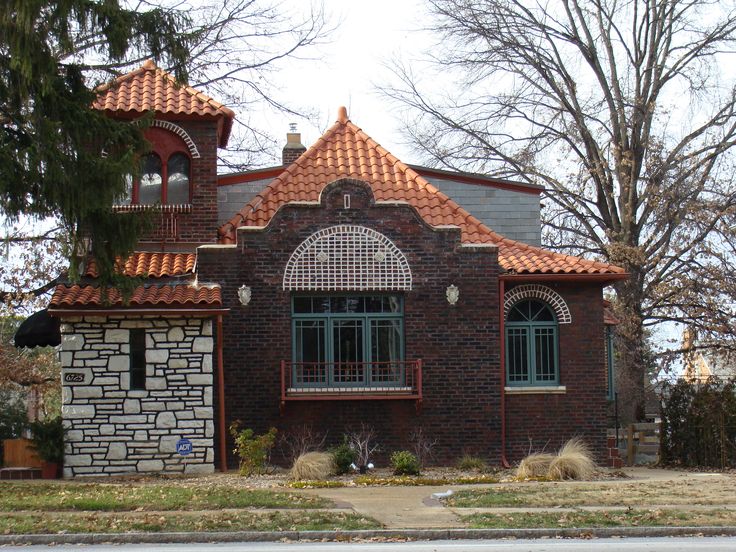#6909. Eclectic Brick Facade with Spanish Colonial Revival Elements

This charming brick structure exemplifies an eclectic early 20th-century architecture that combines elements of Spanish Colonial Revival and Tudor Revival styles. The facade masterfully blends various materials and textures: dark red brick dominates the main portion, contrasting with white stone masonry on the left side, creating a visually interesting asymmetrical composition.
The distinctive red terracotta roof with curved tiles deserves special attention, giving the building a Mediterranean charm. The central element of the facade—a semi-circular arched window with decorative gridwork in Romanesque style—becomes the compositional focal point. Window frames are finished in turquoise, adding expressiveness against the dark brick background.
The facade is enriched with various architectural details: decorative arches above windows, ornamental elements, and a small tower on the left side. This attention to detail is a distinguishing feature of houses from this period. When designing a modern facade, a similar approach to combining materials and textures can create an expressive and individual appearance.
Despite its relatively compact size, the house conveys an impression of solidity and status thanks to its thoughtful proportions and quality finishing materials. The use of various textures and decorative elements is a technique that can be successfully applied in contemporary architecture to create a memorable and distinctive building appearance.